Within a UITableViewController, with static UITableViewCells, I am trying to create a reusable grid with a definite number of cells per row, variable widths and heights.
In Identifying and fixing auto layout issue from log output, it was suggested that UICollectionViews would be a better approach.
Using static UICollectionViewCells, as per https://robkerr.com/how-to-create-a-static-uicollectionview/, I have been able to set up one collection view grid.
BUT, I'm having difficulty adding a second, separate, and different grid in another UITableViewCell.
I thought I might be able to create separate IB outlets for the UICollectionView and then use this to select which data to use.
@IBOutlet weak var myCollectionView: UICollectionView!
@IBOutlet weak var endingsCV: UICollectionView!
extension NounsTVC: UICollectionViewDataSource
{
func collectionView( _ collectionView: UICollectionView, numberOfItemsInSection section: Int) -> Int
{
if self == myCollectionView
{
print("myCollectionView", cellIds.count)
return cellIds.count}
else if self == endingsCV
{
print("endingsCV", cellIds2.count)
return cellIds2.count
}
}
This crashes without finding the Collection View reuse identifiers.
I've tried using the UICollectionView Identity Restoration ID, but I might not have the correct syntax or placement.
How do I call the correct datasource to configure the cells within the UICollectionViewDataSource and UICollectionViewDelegateFlowLayout methods?
